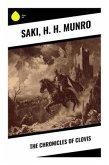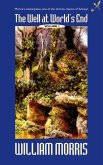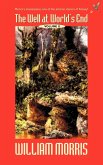In "The Well at the World's End," William Morris crafts a masterful narrative that blends the elements of high fantasy and medieval romance, inviting readers into a richly imagined world filled with intricate detail and poetic language. The story follows the hero, Ralph of Upmeads, as he embarks on a quest to find the legendary Well at the World's End, a symbol of ultimate fulfillment and transcendence. Morris's literary style evokes the grandeur of ancient sagas, interwoven with mythic undertones and moral quests, reflecting the influences of the medieval texts he admired while pioneering the themes of idealism and harmony between nature and art. William Morris (1834-1896) was a pivotal figure in the British Arts and Crafts Movement, renowned not only for his writings but also for his contributions to art and design. His deep-seated belief in craftsmanship and the beauty of nature profoundly influenced his storytelling. Morris, drawing on historical and mythical inspirations, sought to elevate ordinary life through artistic expression, reflecting the socio-economic context of his time, which called for a return to meaningful, artisanal creation amid industrialization. I highly recommend "The Well at the World's End" to readers seeking a profound escapade through a richly textured mythos. Morris's vision, elevated prose, and timeless themes of love, courage, and the search for beauty resonate deeply, ensuring that this enchanting tale is not only a feast for the imagination but also an exploration of the human condition that remains relevant today.
Bitte wählen Sie Ihr Anliegen aus.
Rechnungen
Retourenschein anfordern
Bestellstatus
Storno








